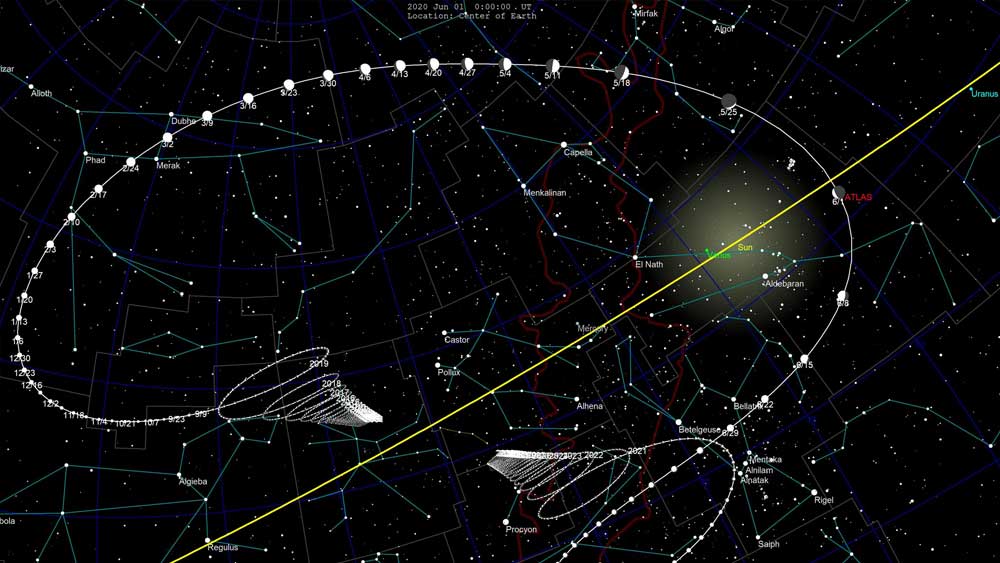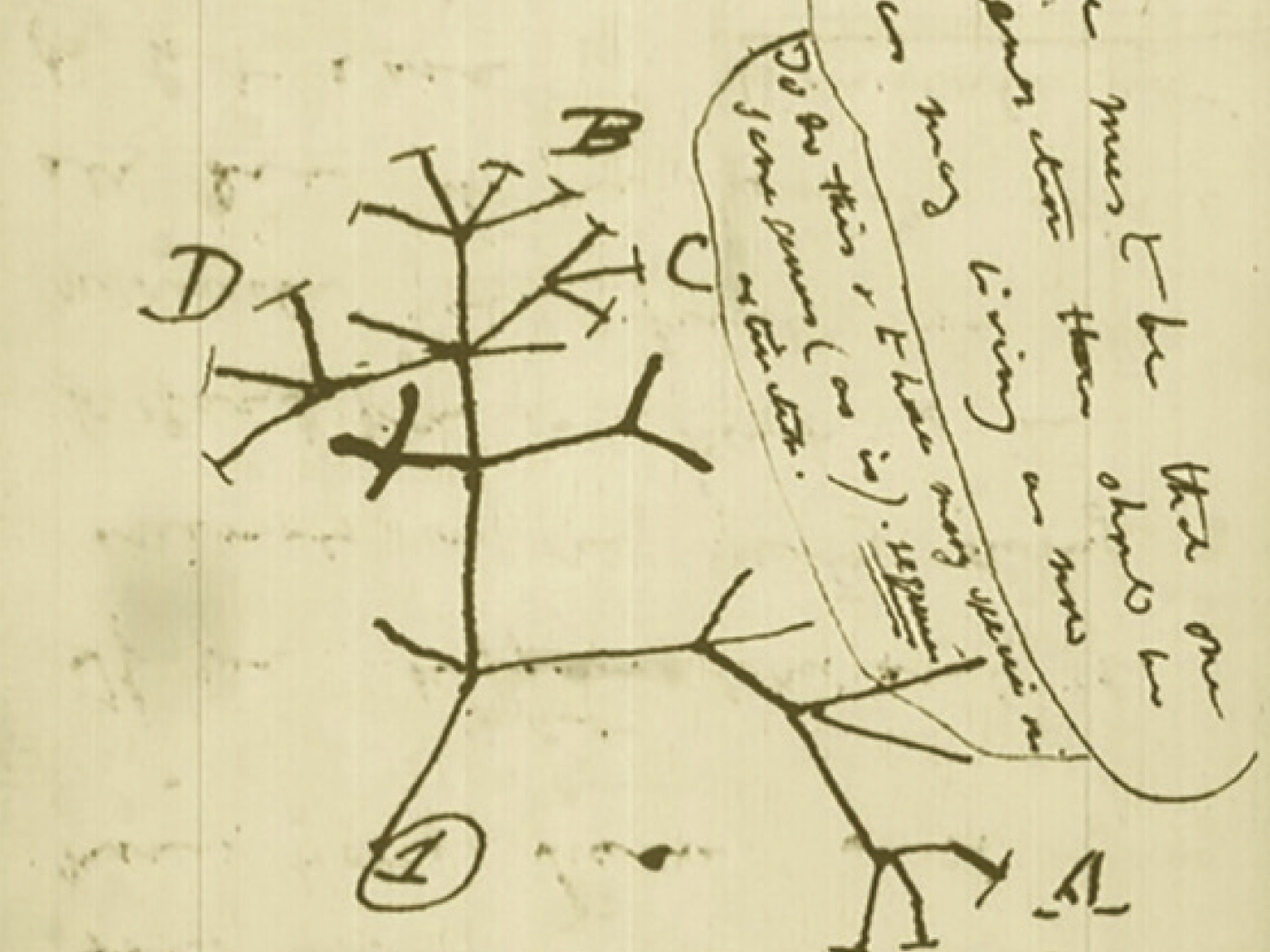For northern-hemisphere families in isolation due to the coronavirus pandemic, a recently discovered comet may provide some needed diversion.1 This comet is dubbed ATLAS after the Hawaiian organization that discovered it: the Asteroid Terrestrial-Impact Last Alert system. The comet is barely bright enough to be seen with binoculars under dark sky conditions.2
This comet is somewhat unusual for a number of reasons. First, this comet is greenish in color. Second, it has dramatically increased in brightness (by a factor of 4,000) in just one month. Astronomers expect it to reach its maximum brightness at the end of May. If its brightening trend continues and the comet remains intact, it could become brighter than the planet Venus as seen from Earth.2
A star map showing the comet’s position every seven days has been published online and can be accessed here.2 Should the comet become bright enough, plotting its path on a sky chart would make a good do-at-home science activity for families isolated due to the coronavirus. A printable PDF sky map can be found at the website Heavens Above.3 Even for those not able to go outside, an Italian astronomer has posted observations of the comet online, with the specific goal of helping those who are self-quarantined.1
As any comet gets closer to the sun, ices in the comet nucleus vaporize, forming a fuzzy cloud around the comet, and sometimes the long beautiful tails, for which comets are so well-known.4 For this reason, a comet loses some of its mass during each orbit. Eventually no more ices remain, and the comet is no longer visible. In fact, comets often disintegrate as they approach the sun. Secular astronomers think comet nuclei are “leftovers” from the formation of our solar system 4.6 billion years ago. However, most comets can only last thousands of years, not billions or even millions.
Secular astronomers are, of course, aware of this, but they claim that reservoirs of potential comet nuclei can resupply the solar system with new comets to replace those that have been destroyed. Comets with long orbital periods, like Comet ATLAS, are thought to originate from an enormous “cloud” of comet nuclei called the Oort Cloud. Comets with shorter orbital periods are thought to originate from belts of bodies, called the Kuiper Belt and the Scattered Disk, that lie beyond Neptune’s orbit.
However, there are problems with these supposed comet reservoirs. For instance, while some astronomers think that short-period comets with orbits similar to Halley’s Comet originate from the Scattered Disk, other astronomers have pointed out that the Scattered Disk does not have nearly enough material to serve as a reservoir for Halley-type comets. So they suggested that perhaps Halley-type comets originate in the Oort Cloud.5 But there’s no direct evidence that the Oort Cloud even exists, as acknowledged even by the well-known secular astronomer Carl Sagan!6
Comet ATLAS may provide a much-needed diversion for home-bound families during the coronavirus pandemic. But it is also one of many reminders7-10 that our solar system is young.
References
1. Irizarry, E. How to see bright Comet ATLAS. EarthSky. Posted on earthsky.org March 22, 2020, accessed March 23, 2020.
2. Yirka, B. Comet ATLAS may put on quite a show. Phys.org. Posted on phys.org March 23, 2020, accessed March 23, 2020.
3. Interactive sky chart. Heavens Above. Posted on heavens-above.com, accessed March 25, 2020.
4. In fact, the word comet derives from a Greek word meaning “wearing long hair,” a reference to comets’ hair-like tails.
5. Wang, J.-H. and R. Brasser. 2014. An Oort Cloud origin of the Halley-type comets. Astronomy & Astrophysics. 563, A122.
6. Druyan, A. and C. Sagan. 1985. Comet. New York: Random House, 398.
7. Hebert, J. 2018. Our Young Solar System. Acts & Facts. 47 (9).
8. Hebert, J. 2019. Moon is Unexpectedly Still Cooling and Shrinking. Creation Science Update. Posted on ICR.org June 6, 2019, accessed March 25, 2020.
9. Thomas, B. Pluto’s Craterless Plains Look Young. Creation Science Update. Posted on ICR.org November 23, 2015, accessed March 25, 2020.
10. Hebert, J. Youthful Solar System Bodies Puzzle Evolutionary Scientists. Creation Science Update. Posted on ICR.org February 13, 2013, accessed March 25, 2020.
Stage image: Comet's trajectory in the sky with 7-day markers.
Stage image credit: Tomruen/CC BY-SA 4.0/Wikimedia Commons. Used in accordance with federal copyright (fair use doctrine) law. Usage by ICR does not imply endorsement of copyright holders.
*Dr. Jake Hebert is Research Associate at the Institute for Creation Research and earned his Ph.D. in physics from the University of Texas at Dallas.

Comet ATLAS: Nighttime Diversion for Isolated Families
The Latest
Is an Ancient Extinct Tree-Dweller Our Relative?
Human evolution has always been hazy with seemingly as many attempted explanations for how we evolved from animals as there are paleoanthropologists.
Evolutionists...
The Return of the Dire Wolf?
There’s been much recent excitement about the birth of three dire wolf (Aenocyon dirus) puppies by a Dallas-based biotech company: Colossal Bioscience....
CREATION PODCAST
Cracks in the Layers: Lake Suigetsu and the Old Earth Illusion...
Welcome to the third episode in a series called “The Failures of Old Earth Creationism.” Many Christians attempt to fit old earth...
Fish Fossil Vomit
A rather unsavory news story recently appeared regarding fossilized vomit. Although it’s hardly dinner table conversation, it nonetheless supports...
Dino Footprints Down Under
Dinosaur trackways1 are once again making the news. Australia is the setting of a remarkable series of dinosaur tracks attributed to ornithischian...
April 2025 ICR Wallpaper
"But the Helper, the Holy Spirit, whom the Father will send in My name, He will teach you all things, and bring to your remembrance all things...
Human Evolution and the Inner Ear
The vain attempt by evolutionists to make an evolutionary connection between people and ape-like ancestors continues. This time, it is in regard to...
CREATION PODCAST
Defending the Faith with a Rocket Scientist | Creation.Live Podcast:...
How do engineering principles, biological complexity, and a solid understanding of apologetics work together to further the cause of Christ? Why...
Aerobic and Anaerobic Hot Spring Bacteria
God designed a domain of prokaryotes called Archaea that thrive in harsh and extreme environments. In 1969, two microbiologists, Thomas Brock and Hudson...
CREATION PODCAST
The Soulless Hominid Theory: A Fatal Flaw in Old Earth Creationism...
Welcome to the second episode in a series called “The Failures of Old Earth Creationism.” Many Christians attempt to fit...




















